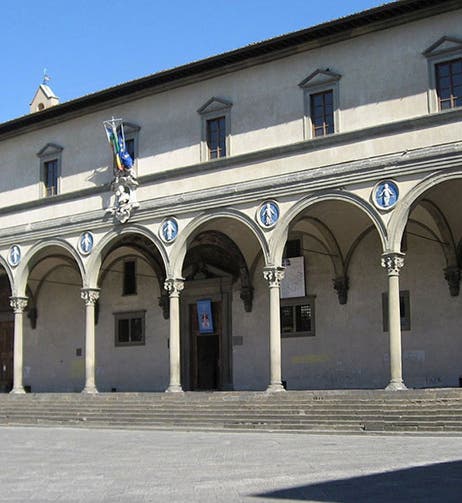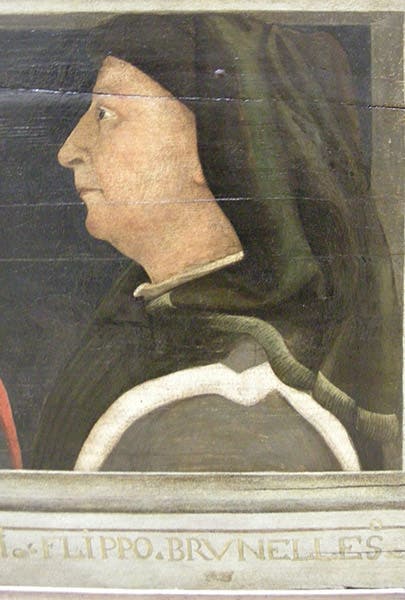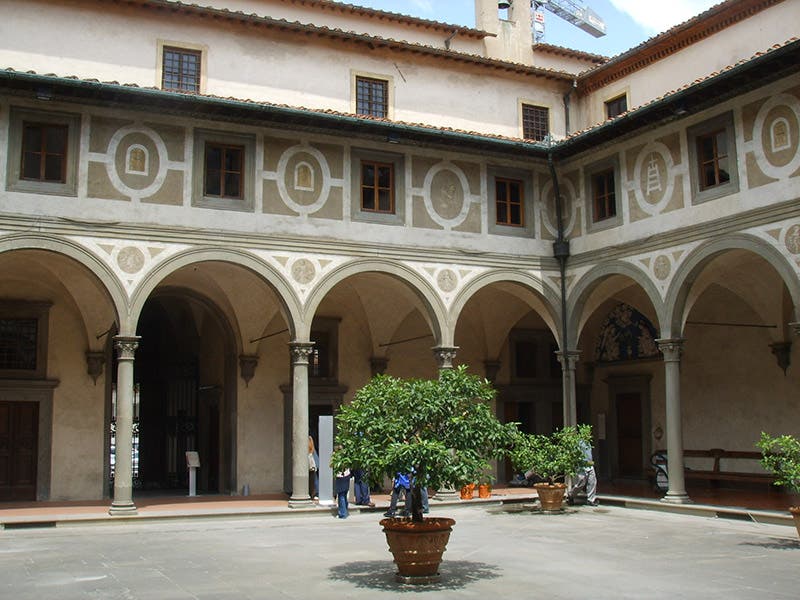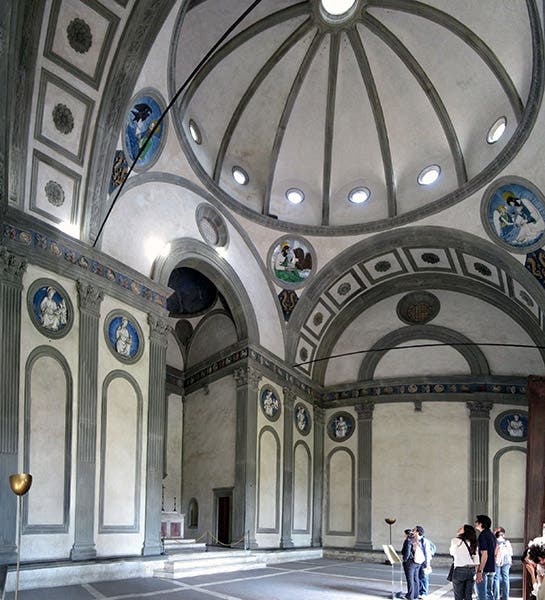Scientist of the Day - Filippo Brunelleschi
Filippo Brunelleschi, a Florentine goldsmith, sculptor, engineer, and architect, died Apr. 16, 1446, at the age of about 66; his date of birth is unknown. Trying to discuss Brunelleschi in one post is almost as daunting as trying to do so with Leonardo da Vinci, our subject yesterday. In 1401, Brunelleschi competed brilliantly, if unsuccessfully, for the commission to design the East Doors for the Baptistry of the Cathedral of Florence; he invented the mathematical techniques for one-point perspective sometime before 1415, thereby jump-starting Renaissance art; and he designed and built the imposing dome on the Florentine cathedral, Santa Maria del Fiore, which even today dominates the skyline of Florence and looms as a formidable engineering success story. Each of these feats would be enough for any one man or woman, one would think.
And we have not yet mentioned the achievement that we are going to focus on today – Brunelleschi’s architectural design for the entrance loggia of the Hospital of the Innocents (Ospedale degli Innocenti) in Florence, which established the guidelines for all subsequent Renaissance architecture for the next century (first image, above). The foundling home was a charitable institution established by the Arte della Seta, the silk merchants’ guild, which, curiously, also included goldsmiths, and thus Brunelleschi, and he won the design competition. We know Brunelleschi designed and built the entrance loggia, and since the inner cloisters and their loggias look just like the outside (third image, below), it is probable that the entire building reflects his design. Brunelleschi had seen the ruins of ancient Rome and was inspired to include classical architectural elements in his building. He had almost certainly read Vitruvius’s ancient treatise on architecture, which had been recovered only a few years earlier in Florence. What is new about Brunelleschi’s façade, compared to the prevailing Italian Gothic style, is that it is designed around simple and harmonious geometric shapes. Its elements are proportional to one another – each column, for example is just as tall as it is distant from the next column, thus defining a square. The arches are half-circles. Each of the slim columns has Vitruvian proportions and carries a classically correct capital, in this case, one of the Composite order. There are pilasters on either side that echo the design of the columns (not visible in our photo), another feature picked up from Vitruvius. And there are only two colors in use – the grey-green stone of the columns, a local stone called pietra serena, and the white stucco of the walls. The blue ceramic medallions by Andrea della Robbia, although beautiful to us, were added later and were not part of Brunelleschi’s original design.
What we have then is a building that is simple and clean, with pleasing proportions, very little decoration, classical architectural elements, and a geometric plan. Soon every new building in Florence, whether by Brunelleschi, Leon Battista Alberti, or Michelozzo, would be designed and built along these very same Vitruvian principles as articulated by Brunelleschi. He single-handedly invented the Renaissance architectural style.
The Hosital of the Innocents was not ready for its first foundling until 1445, a year before Brunelleschi’s death. By that time, he had already begun another major construction, the Pazzi Chapel of the Santa Croce basilica in Florence. It is a masterpiece – a design based on simple proportions, with circular arches, square and rectangular bays, grey-green pietra serena against white walls, harmony everywhere, a sonata in stone. If the Hospital of the Innocents saw the beginning of the Renaissance style of architecture, the Pazzi Chapel might represent its epitome. And both were the work of Brunelleschi.
There is a wonderful painting in the Louvre by an unknown 15th-century Italian artist, usually called Five Famous Men, that strings out, in a line, portraits of five great Renaissance artists, including Giotto, Paolo Uccello, Donatello, Antonio Manetti, and, at the far right, Filippo Brunelleschi. He is in good company. And so are they. Our opening portrait was extracted from this one.
Dr. William B. Ashworth, Jr., Consultant for the History of Science, Linda Hall Library and Associate Professor emeritus, Department of History, University of Missouri-Kansas City. Comments or corrections are welcome; please direct to ashworthw@umkc.edu.










